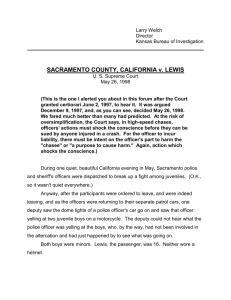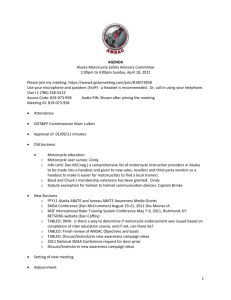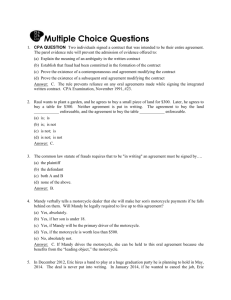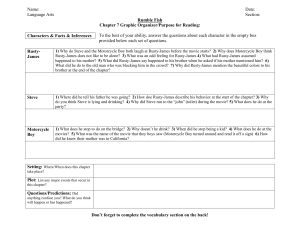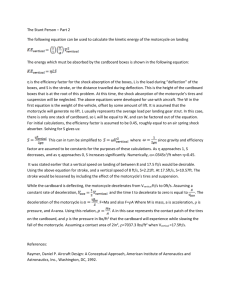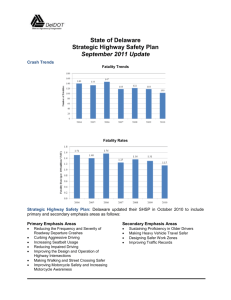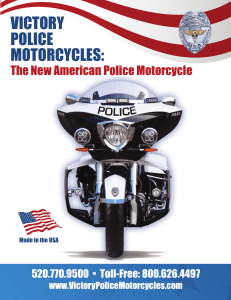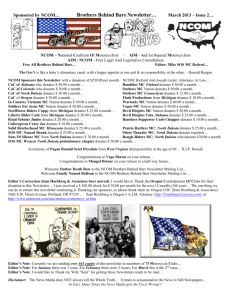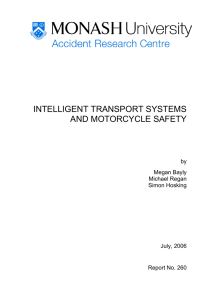Sacramento v. Lewis,523 U.S.833 (1998).
advertisement
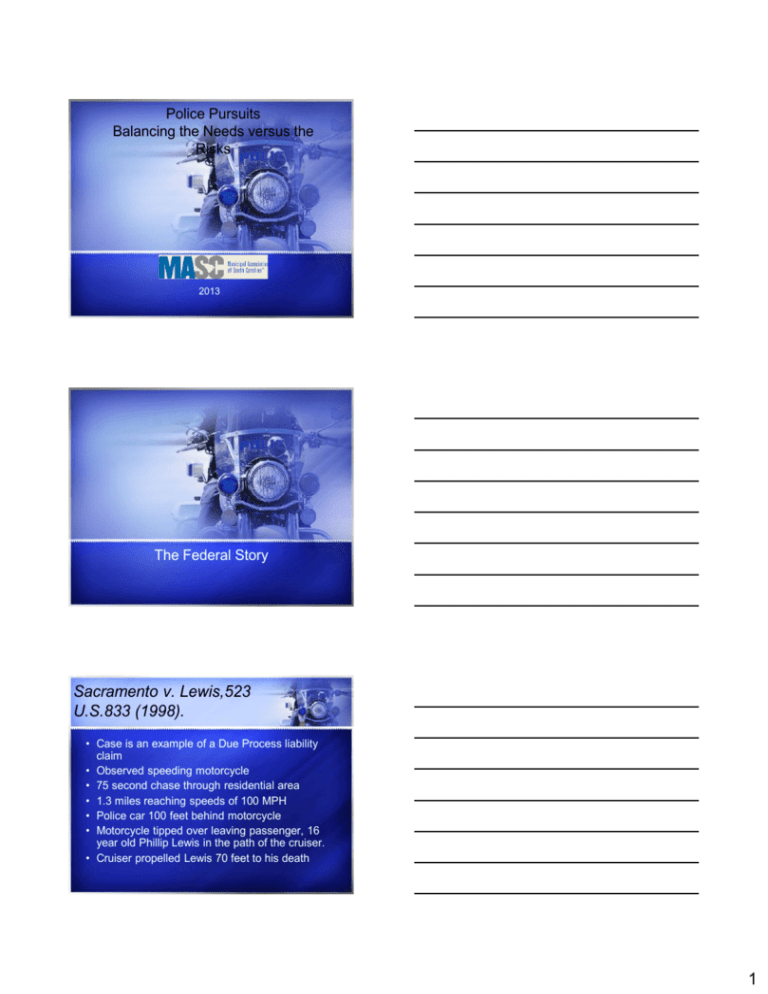
Police Pursuits Balancing the Needs versus the Risks 2013 The Federal Story Sacramento v. Lewis,523 U.S.833 (1998). • Case is an example of a Due Process liability claim • Observed speeding motorcycle • 75 second chase through residential area • 1.3 miles reaching speeds of 100 MPH • Police car 100 feet behind motorcycle • Motorcycle tipped over leaving passenger, 16 year old Phillip Lewis in the path of the cruiser. • Cruiser propelled Lewis 70 feet to his death 1 Holding of Case “A violation of due process occurs only when the police officer has a “purpose to cause harm unrelated to the legitimate object of arrest.” It must be this type of purposeful harm in order to shock the conscience.” No Federal Liability since 1998 • Suspect crashes on his/her own • Suspect crashes into innocent third party • Officer “accidentally” crashes into anyone Jack Ryan for PATC© What was left-intentionally stopping 2 The 4th Amendment Claim Scott v. Harris • Scott v. Harris-decided 4/30/07-The government’s interest in protecting pedestrians, motorists, and the involved officers outweighed the risk of injury to Victor Harris. Held… “Instead, we lay down a more sensible rule: A police officer’s attempt to terminate a dangerous high-speed car chase that threatens the lives of innocent bystanders does not violate the Fourth Amendment, even when it places the fleeing motorist at risk of serious injury or death” Walker v. Davis, 649 F.3d 502 (6th Cir. 2011) The possible… • • • • • • Speeding violation 70 in a 55 Deputy tries to block road motorcycle avoids Motorcycle chase five minutes Never over 60 mph Ramming occurs in muddy field Not Hollywood style chase of Scott v. Harris 3 What about State Law • South Carolina §56-5-760 “The provisions of this section do not relieve the driver of an authorized emergency vehicle from the duty to drive with due regard for the safety of all persons.” Jack Ryan for PATC© • In Clark v. S.C. Dep't of Pub. Safety, the South Carolina Court of Appeals pointed out that in 1990 the South Carolina legislature changed the language in the emergency vehicle operation statute from the common “reckless disregard” language to a “due regard for safety” of others standard. In doing so, the legislature imposed a more significant duty of care on law enforcement officers while operating in the emergency vehicle mode. While not a straight negligence standard, it is a gross negligence standard which is much different than a reckless standard. • Clark v. S.C. Dep't of Pub. Safety, 353 S.C. 291 (S.C. Ct. of Appeals 2002). 3 Types of Policy • Discretionary-officer and supervisors can pursue anything while balancing risk versus need • Restrictive-limited to most serious events and still must balance risk versus need • Prohibitive-don’t chase anything Jack Ryan for PATC© 4 Restrictive • Violent felony only or pre-pursuit recklessness that poses threat • Balancing – – – – – – – • • • • • Environment Roadway Vehicles-limits Known suspect Traffic-Pedestrian Supervisory Oversight Number of Vehicles -Tactics -Intersections -line of sight -Officers Involved Jack Ryan PO Box 622 Greenville, R.I. 02828 jackryan2@cox.net 401-692-1555 5
